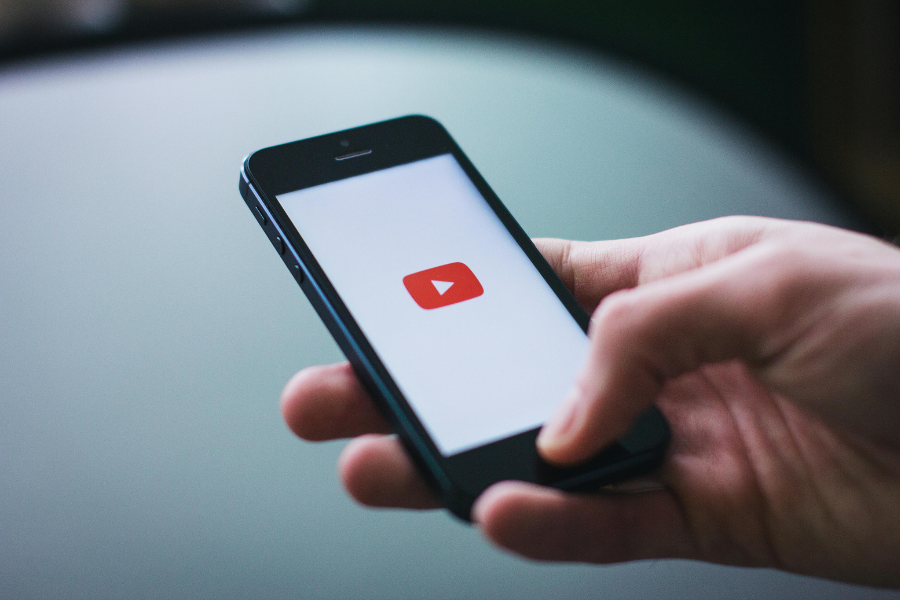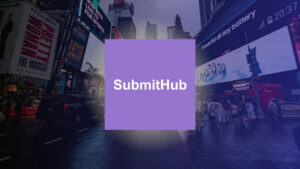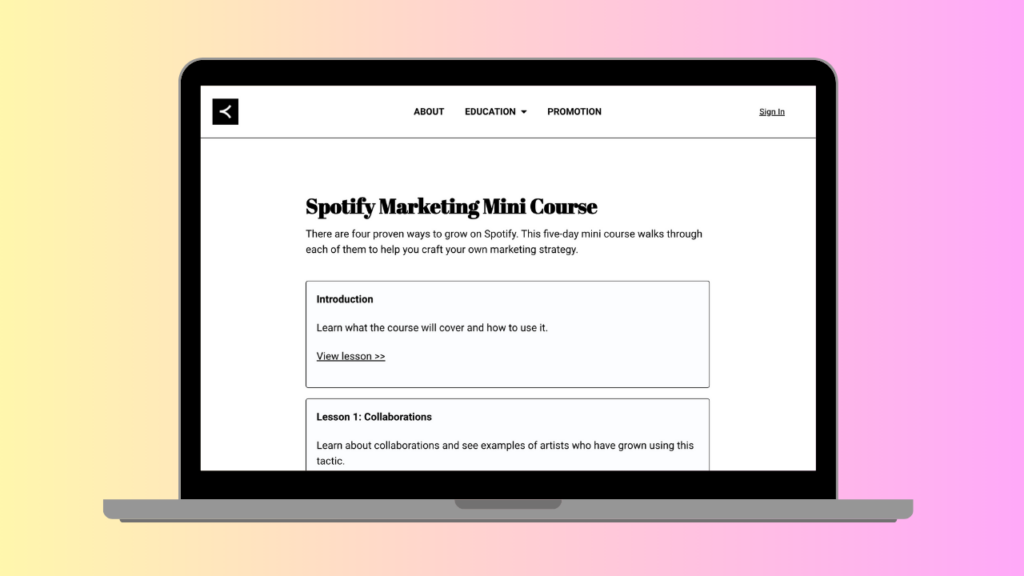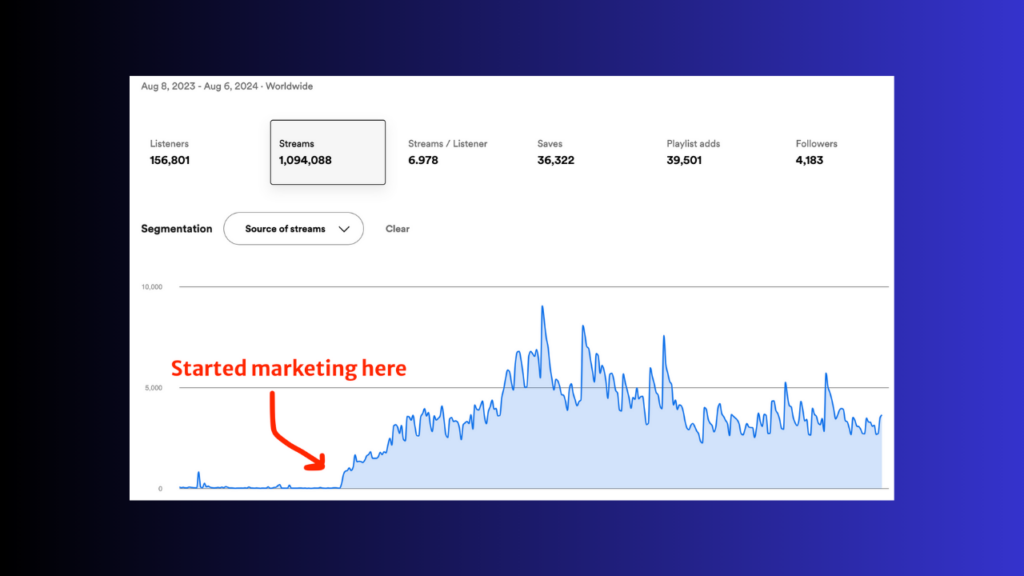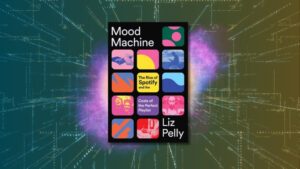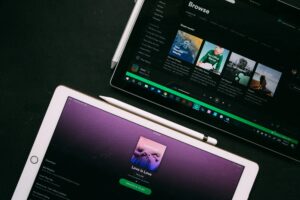I launched my YouTube channel in October of 2023.
Technically, I guess the channel had existed for about a year before that. But I’d only used it as a place to host a few random videos, and nobody really knew it existed. In October, 2023, there were two people subscribed to my account – and one was me from my middle school email address.
So my goal that first year was to get to 1,000 subscribers on the channel.
I cranked out about 50 videos over those first 12 months, most of them poorly made and featuring a disturbingly minimal amount of blinking.
I made it to my subscriber goal by the skin of my teeth. Nearly a year to the day after starting, I crested the 1,000 subscriber mark, at which point I high-fived myself, drank a lemon Spindrift, let out a soft little whoop… and then promptly realized that the number 1,000 meant absolutely nothing.
“2,000 subscribers,” I thought to myself, “now that would be something.”
I notched 2,000 subscribers about six months later, at which point I promptly realized that that number, too, was absolutely arbitrary.
“10,000 subscribers – it turns out that that’s when you really make it as a YouTuber,” I decided.
I can’t tell you whether or not 10,000 is the magic number quite yet. But, increasingly, I’m coming to hold a belief that the October 2023 version of Jon would’ve viewed as utterly heretical:
Followers don’t really matter anymore.
Followers used to matter as a means of distribution.
In other words, when somebody followed you on an internet platform – like Facebook, Instagram, YouTube, etc. – there was an expectation that they would be able to see the things you posted in the future. That was, more or less, the entire point of following somebody.
But two things have changed.
1) Due to financial incentives, social platforms have increasingly gated access to audiences.
One of the first and most public examples of this happened on Facebook. In the early 2010s, you used to able to post something and expect that everyone who followed your page would see it.
Then, overnight, that idea was destroyed.
Pages with hundreds of thousands of followers suddenly found that only a tiny percentage of their audience was actually seeing their posts. Instead of guaranteed reach, Facebook started asking for ad spend so that posts could be “boosted” to reach existing audiences.
This pattern has played out again and again on social media networks; platforms give creators the means to grow an audience, then charge them to actually reach it.
It’s obnoxious, but it makes sense given the financial incentives of the platforms.
But there’s another factor at work, too:
2) To increase user time spent on-platform, social platforms have transitioned to topic-based feeds (rather than feeds based on who users are following).
TikTok is the poster child for this movement. The app’s default experience is the “For You” page, which is an endless scroll of videos that’s populated based on interests and heavily impacted by subconscious actions. For instance, if you watch most of a video, you’ll probably see more like it, even if you don’t consciously “like” the video or its topic.
It’s not just TikTok, though. Virtually every app has moved toward this model. My Facebook feed, at which, thank goodness, I almost never look, now appears to be 80% topical stuff from pages and people that I’ve never heard of.
(Most of it is related to hobbits and surfing, in case you want to know. I don’t consider myself a huge LoTR fan and I’ve never surfed in my life, but apparently Facebook thinks otherwise.)
AI has made this topic-based model possible, because the platforms can now tell what a video is about without much user prompting. And the platforms have switched to it because it keeps users watching for longer – and more watch time leads to more ad revenue.
So where does this leave artists?
First, a pseudo-philosophical aside: Overall, for reasons I won’t cover here, I think the shift toward topic-based feeds is a harmful societal trend.
I don’t think that technology in general is morally neutral (because technology is developed by people to serve the goals of people, and I don’t think people are morally neutral). In general, I think the way social platforms are being designed is probably harmful to people’s health.
With that said, from the artist perspective, I think there are a few main consequences to the way things are going – and not all of them are total downers.
First, you should probably stop focusing so much on follower growth.
Followers just don’t matter as a means of distribution. This is true across nearly every platform. Here, for example, is data from three recent artist releases on Spotify:
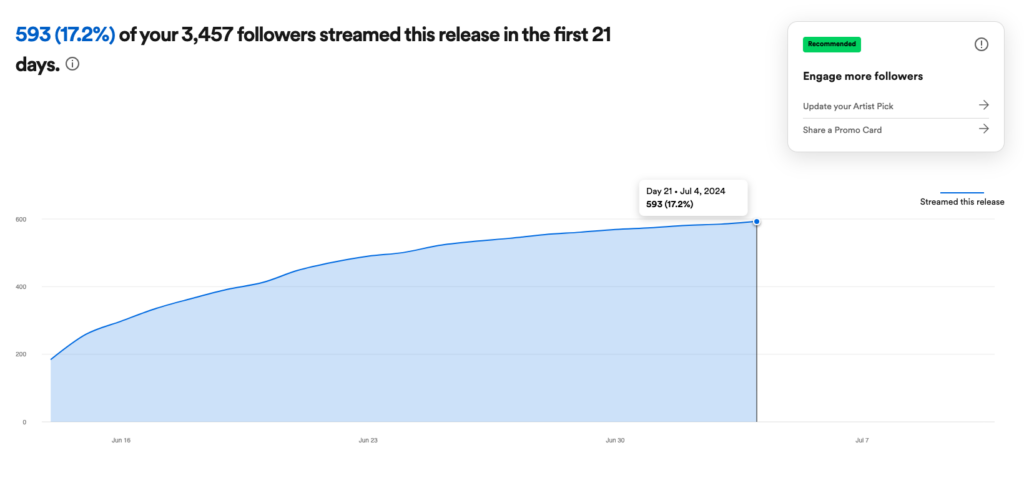
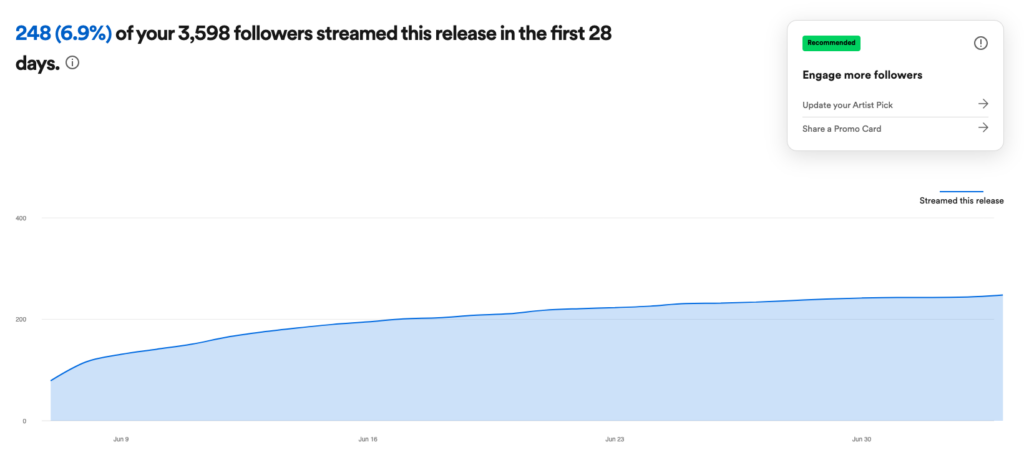
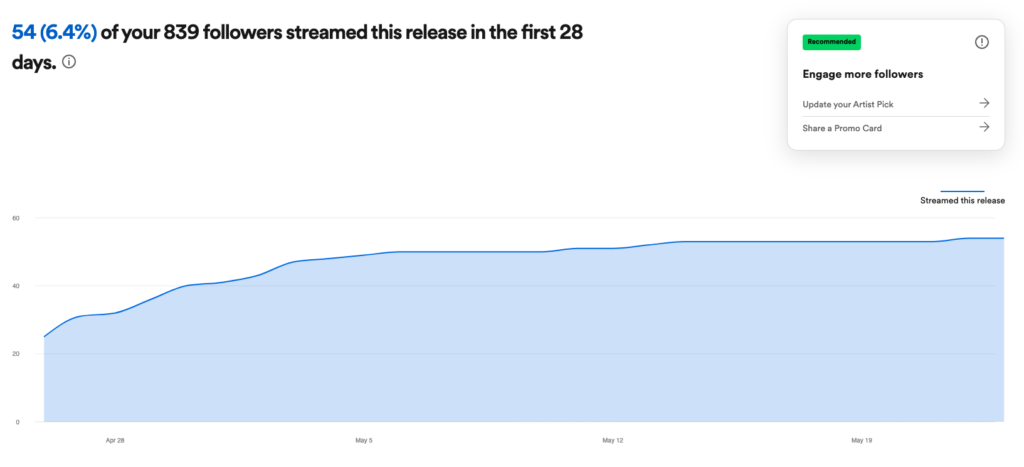
(Notice the prompts to “Engage more followers.” I’m cynical, but I bet that in not too long those options will prompt you to pay Spotify money in exchange for more reach. Marquee, anyone?)
Pretty crazy. On the most engaged release, only 17% of the artist’s followers streamed it within the first month (which is typically when Release Radar kicks in). And that’s the high-water mark. The other two artists’ releases didn’t even make it to 7% of their followers.
I’ve seen this again and again. Clearly, just because somebody follows you on Spotify, it doesn’t guarantee they’ll see the new music you put out.
And, one more time: This isn’t a Spotify-specific thing. This is the trend on virtually every social platform. My latest YouTube video, for example, reached roughly 8% of my 2,600 subscribers.
Followers may still matter as a means of social proof, but they certainly aren’t guaranteed to see what you post.
Second, rather than pursuing social followers, you should focus on building audiences where you can control distribution.
There are basically three versions of this sort of audience:
- Email lists
- SMS (text message) lists
- Community platforms (Patreon, Substack etc.)
Random aside: I actually consider email to be less of an owned audience than people like to think, because 80% of email accounts are serviced by major providers like Google and Microsoft – and those companies can change their policies at any point. But email is still a much safer place than your typical social media platform.
In general, with these three sorts of platforms, the follower still matters as a means of distribution. People sign up to hear from you, and you can reach them when you want to.
Finally, you should probably take advantage of the new method of distribution on social platforms.
I’ve written pretty negatively about the shift toward topic-based feeds, but there’s one thing that I do find really exciting about it:
The playing field for reaching people has been hugely democratized.
When followers were the primary means of distribution, it meant that you had to have a large audience to reach a lot of people. That’s not true anymore. In our topic-driven-social-feed world, you can reach a ton of people without any pre-existing audience simply by creating something engaging.
It’s not unheard of to get millions of views on your first, second, or third TikTok video. If you understand how the platform works and make something that works for the platform, the views can come fast.
I’ve seen this on a much smaller level. In the first few months of launching my YouTube channel, I had a video get a few thousand views. It was small potatoes in the grand scheme of things, but it way outpaced the level of reach I expected at the time, given that I only had 200-some subscribers.
Social platforms have never been better at generating raw reach. So use that. Treat social platforms as a way to reach a bunch of eyes rather than as a place to build deep relationships and you won’t be (quite) as disappointed.
Then, do your best to bring people from your social profiles onto the platforms you control.
If you want a more detailed breakdown of this line of thinking…
Then I’d recommend giving Jack Conte’s presentation on the “Death of the Follower” a watch. He’s the founder of Patreon, and he presented on this premise during SXSW in March with much more clarity and eloquence than I’ve managed here.
All right, that’s all I’ve got for today.
I’ll let you know if this stuff holds up when I reach the 10,000 subscriber mark on YouTube. There’s still a chance that it’s all just a numbers game; maybe when I reach a magical number of followers, all of my wildest dreams will come true.
Who knows – 10,000 YouTuber subs still might be the ticket to getting affirmed by Harry Styles and sponsored by Chipotle. I’ll keep you posted.

